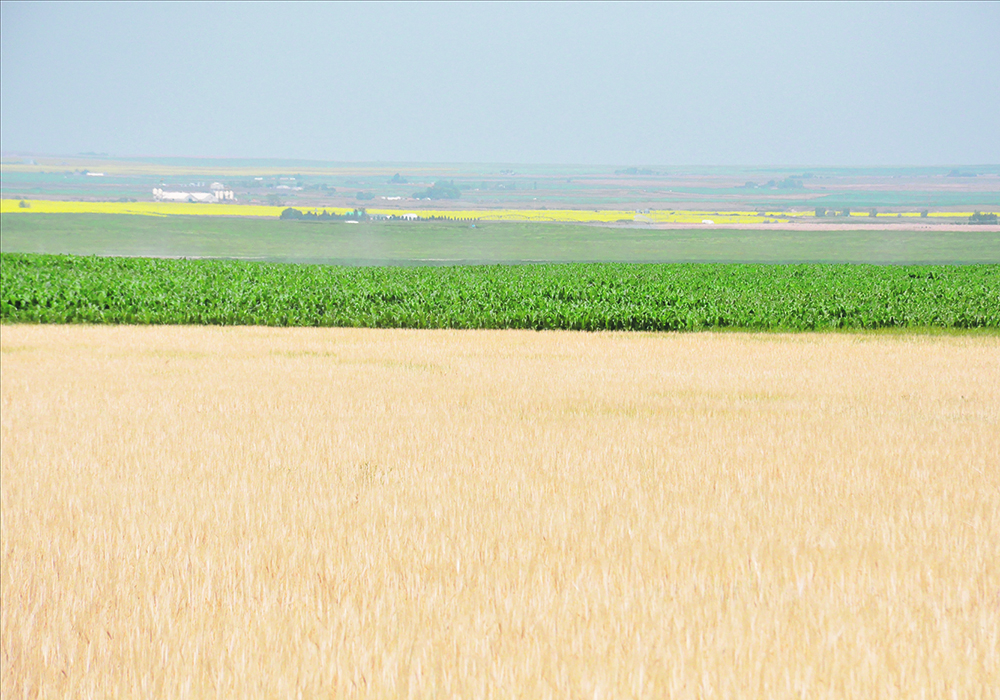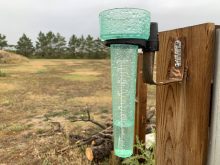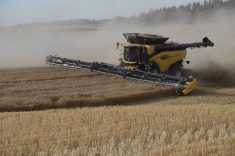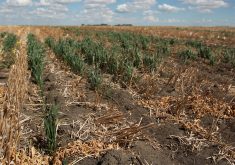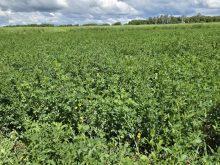Farmland is still getting more expensive, but not quite as quickly as in recent years, according to the latest farmland value report from Canada’s biggest agricultural lender.
Farm Credit Canada put average national farmland value growth in 2023 at 11.5 percent, down from 12.8 percent in 2022.
“We’re seeing a little bit of a pullback,” FCC chief economist J.P. Gervais said.
“It’s still double digit, still a very significant increase.”
Read Also

Using artificial intelligence in agriculture starts with the right data
Good data is critical as the agriculture sector increasingly adopts new AI technology to drive efficiency, sustainability and trust across all levels of the value chain.
Given global geopolitical events, which have led to significant market volatility in the last few years, Gervais was expecting even more of a pullback.
There was significant variability. Land value growth in some provinces remained above 10 percent, while British Columbia’s pace actually dipped into the red by 3.1 percent, although it also had the highest average land value on a per-acre basis.
The highest average provincial increases in farmland values were found in Saskatchewan, Quebec and Manitoba, with increases of 15.7 percent, 13.3 percent and 11.1 percent, respectively. That’s up from 14.2, 11 and 11.2 percent, respectively, in 2022.
Rate increases from other provinces included 10.7 percent in Ontario (down from 19.4 per cent in 2022), 7.8 percent in Nova Scotia (down from 11.6), 7.4 percent in Prince Edward Island (down from 18.7), 6.5 percent in Alberta (down from 10 percent) and 5.6 percent (17.1 percent in 2022) in New Brunswick.
That’s a change from 2022, when Ontario, Prince Edward Island and New Brunswick topped the list for the quickest growing farmland values.
Alberta was not immune to the value slowdown, but what gains there were stem largely from more interest in irrigation.
“The irrigated market is very strong for reasons that we can suspect when it comes to some of the conditions that we’ve had in the country,” said Gervais.
As of the end of December, the entire prairie region was under some level of drought rating, according to the Canadian Drought Monitor. Large parts of northern and central Alberta were scraping by with an “abnormally dry” classification, the least serious rating of the monitor’s five-point scale, but most of the rest of the province was in severe to exceptional drought. The drought monitor considers a “severe” rating a once-in-a-decade event, while exceptional drought might be seen once every half century.
It marked another consecutive year of drought on the Prairies.
In 2021, drought spurred widespread government aid packages. As of early 2022, big patches of southern, central and eastern Alberta, as well as most agricultural areas in Saskatchewan and Manitoba, were also in severe to exceptional drought.
Alberta’s irrigated farmland value grew 11.7 percent in 2023, the most of all the province’s sectors. That, however, pales in comparison to the 29.9 percent increase reported in 2022.
Market gains in irrigated crops likely helped those land values. Moisture early in the 2023 growing season led to record yields for some specialty crop growers.
“We’ve had some growth in the potato sector, so that explains a little bit of the irrigated land value growth that we’ve had,” said Gervais.
Irrigated land in Manitoba also jumped over the provincial average. Strong demand for potatoes had spud growers looking to expand. In parts of central Manitoba, that contributed to 18.1 percent land value growth.
In Manitoba, however, the price of pastureland was the big story. The Keystone province led the nation in pastureland value increases, with average growth of 19 percent.
Saskatchewan came in second, with a hike of 12.7 percent, followed by Alberta at 9.6 percent and B.C. at 7.4 percent.
It was the second year FCC reported on pastureland values. Due to insufficient sales in Ontario, Quebec and the Atlantic provinces, it focused on data from pastureland sales in Western Canada.
The increase was less than welcomed by Manitoba’s beef sector.
Canadian cattle are enjoying record prices, but Manitoba Beef Producers general manager Carson Callum worried that the sudden jump in pasture prices had little to do with the value of the cattle grazing them.
“A lot of these lands that have been purchased recently may have been bought as pastureland, but in many cases the intent is to chew them up for annual cropping,” said Callum.
“That’s a big concern for us since the cow-calf industry is so reliant on these pastureland habitats.”
Land typically considered only suitable for grazing now faces competition from emerging crop varieties developed for resilience, he said. Producers may wonder whether they could be making more if they were cropping instead.
That said, Callum noted, the cattle market is flying high, while grain prices have slid.
“There’s been a bit of a downturn in some of the cash crop commodity prices, so there might not be as much of a desire to convert,” said Callum.
“And we’ve seen an increase in cattle prices, so those market fundamentals will mean some of these lands will be maintained in place.”
It was a generally unaffordable year to buy land, Gervais said, pointing to the double hit of high interest rates and flagging commodity prices. Actual farmland sales declined slightly from 2022 as producers exercised more caution around investment decisions.
He expects that caution to extend well into 2024 due to continued high interest rates, high input costs and lower grain prices.
In fact, he said, farmland in many parts of the country is less affordable right now than it’s ever been. Fiscal circumstances have also opened up operations to more financial risk.
“It makes it more difficult for young farmers and young operations that have a desire to expand into the industry,” he said.
In the short term, farm receipts of grain, oilseeds and pulses are projected to decline by 13.2 percent in 2024, compared to a 0.4 percent increase in 2023. Gervais had predicted a 4.8 percent decline in 2024 earlier this year.
He urged producers to take action to manage these losses.
“An important part of preparing for inevitable, yet unpredictable, economic changes is not only creating a risk management plan, but also updating it as those shifts in the economy unfold,” he said.

